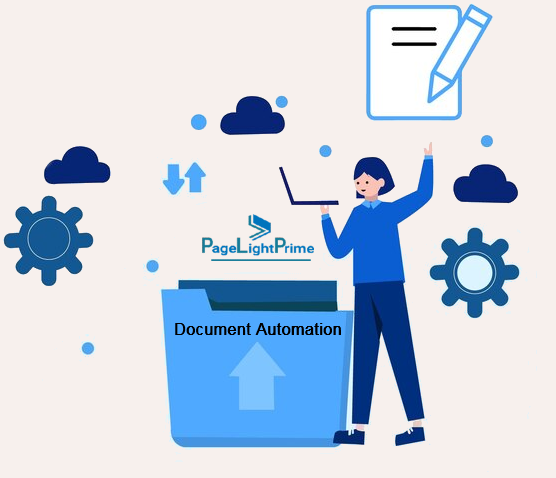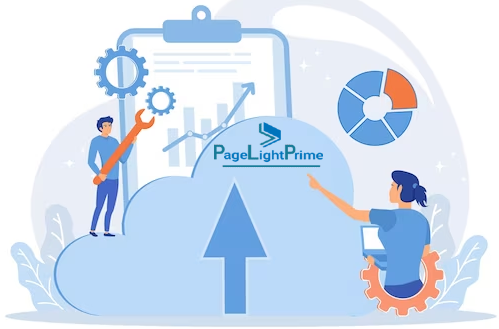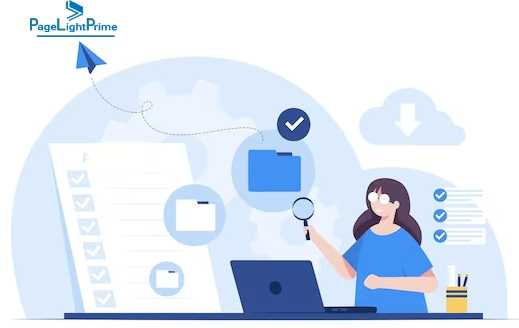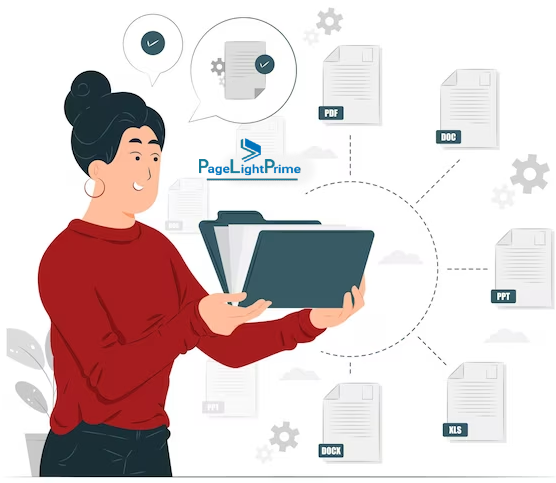What is Document Automation
Time-consuming, repetitive tasks can drain resources and hinder productivity. Document automation, a technology-driven solution, has emerged as a game-changer, streamlining various aspects of business operations. In this blog, we’ll delve into the world of document automation, exploring what it is, its benefits, and its potential impact on businesses, with a special focus on Legal Document Automation.
Written by Knowledge Team, posted on October 18, 2023

Understanding Document Automation
Document automation refers to the process of automating the creation, generation, management, and distribution of documents within an organization. These documents can be anything from contracts and reports to invoices and emails. Automation is achieved through software solutions, which often use templates, predefined rules, and data integration to generate documents.
How Document Automation Works

Template Creation
Users create document templates, often in formats like Word or PDF, which serve as the foundation for automated document generation.
Data Integration
Data sources, like CRM systems or databases, are integrated with the document automation software, ensuring that accurate and up-to-date information is used.
Rules and Logic
Users define rules and logic that dictate how documents should be generated based on the data inputs.
Document Generation
When triggered, the software populates the templates with the relevant data, creating the final documents.
Distribution
Documents can be distributed via email, cloud storage, or printed as needed.
The Benefits of Document Automation
Document automation offers numerous advantages to businesses:
Time and Cost Savings
Manual document creation is time-consuming and prone to errors. Document automation reduces the time spent on document generation and minimizes the risk of human error. This efficiency translates into significant cost savings over time.
Increased Accuracy
Automation ensures that documents are generated with precision, using the most up-to-date data. This leads to fewer mistakes, minimizing potential legal and financial risks.
Consistency
All documents produced through automation follow a standardized format and content, ensuring consistency in branding, legal compliance, and messaging.


Enhanced Productivity
By automating repetitive tasks, employees can focus on more valuable, strategic work. This enhances overall productivity and job satisfaction.
Regulatory Compliance
Document automation can be configured to adhere to specific regulatory requirements, helping organizations stay compliant with industry standards.
Legal Document Automation
Legal Document Automation is a subset of document automation that is tailored to the needs of law firms, legal departments, and organizations dealing with legal documentation. Here’s how it is making a significant impact:
Contract Generation
Lawyers spend a substantial amount of time drafting contracts. Legal Document Automation allows them to create standardized contracts quickly, ensuring that they contain all the necessary legal clauses and conform to best practices. Contract Drafting not only saves time but also reduces the risk of contractual errors and disputes.
Document Assembly
Law firms can automate the assembly of complex legal documents, such as court filings, wills, and real estate documents. This streamlines the process, minimizes errors, and ensures that documents are consistently formatted and compliant with legal requirements.
Compliance and Regulatory Documents
Staying compliant with ever-evolving legal and regulatory requirements is crucial in the legal field. Legal Document Automation ensures that documents are generated in line with the latest legal standards, reducing the risk of non-compliance.


Document Management
Managing vast volumes of legal documents is a challenge for law firms. Legal Document Automation includes features for organizing, storing, and retrieving legal documents efficiently, making it easier to locate and reference critical information.
Collaboration and Review
Document automation tools often have law firm client portal features that allow multiple parties to collaborate on a document. For legal professionals, this is invaluable when working on contracts, case documents, or legal opinions. It streamlines the review and approval process.
Implementing Legal Document Automation
If you’re considering implementing Legal Document Automation in your law firm or legal department, follow these steps:
Identify Your Document Needs
Determine which legal documents can benefit from automation, such as contracts, pleadings, or estate planning documents.
Select Legal Document Automation Software
Research and select a legal document automation software solution that caters to the specific needs of legal professionals and is compliant with legal standards.
Template Creation
Create templates for the legal documents you intend to automate, ensuring they include all the necessary legal clauses and requirements.
Data Integration
Connect the software to your data sources to ensure the accuracy of information used in document generation.


Rules and Logic
Define the rules and logic governing the generation of legal documents, considering legal compliance and best practices.
Training
Provide training for your legal team to ensure they can effectively use the software.
Ongoing Monitoring and Optimization
Continuously monitor and update the system to adapt to changes in the legal landscape and your organization’s evolving needs.
The Future of Document Automation
Document automation is set to evolve further, thanks to advancements in artificial intelligence and machine learning. Document Automation and AI will enable systems to understand complex legal language and generate legal documents with minimal human intervention. Improved integration with other legal software and platforms will make legal document automation even more seamless.
In conclusion, Legal Document Automation is a powerful tool for law firms and legal departments looking to streamline their operations, increase efficiency, and reduce legal risks. As technology continues to advance, the potential for automation in the legal field will only expand, making it an indispensable tool for legal professionals. So, if you haven’t already explored the world of legal document automation, now is the time to consider how it can revolutionize your legal practice or department. The future of law is automated, and Legal Document Automation is leading the way in transforming the legal industry.
